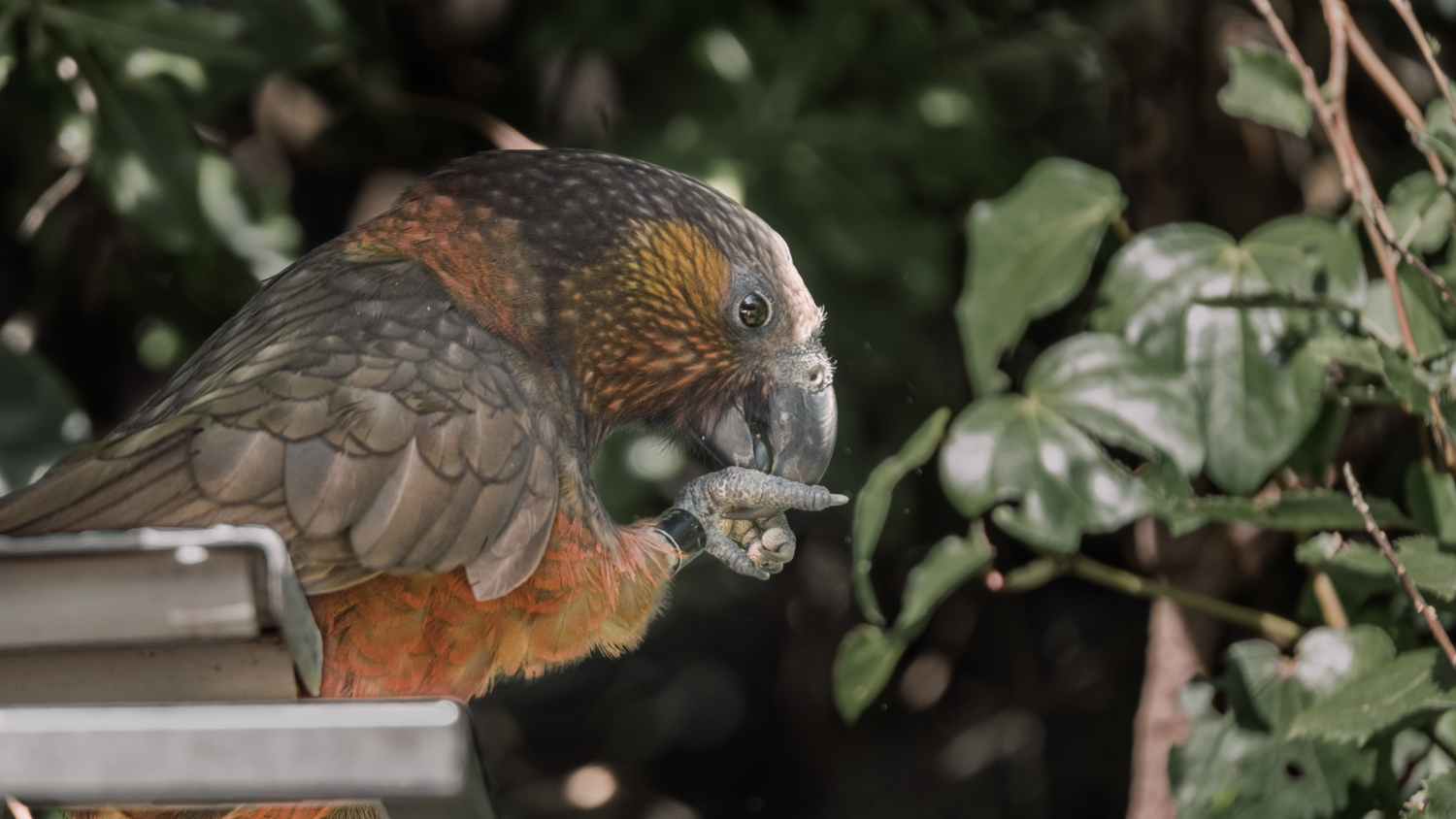Kākā
Zealandia Ecosanctuary
Photo: Lina Marin
Common Name: North Island kākā
Māori name: Kākā
Scientific name: Nestor meridionalis septentrionalis (two sub-species recognised in New Zealand)
NZ Status: Endemic (Found only in NZ)
Conservation Status (NZTCS): Recovering
Found: Large forested areas in the North and South Island
Threats: Predation, particularly during ‘mast years’; competition for food.
Did you know? Kākā are an important pollinator for many native NZ plants.
Mischievous alpine parrot
This forest dwelling parrot is a cousin of the mischievous alpine parrot, the kea, and is one of our most visible and engaging birds. There are two sub species: the North Island kākā (N. m. septentrionalis) and the South Island kākā (N. m. meridionalis).
Drink nectar from flowers
The kākā is a large, olivebrown forest parrot with flashes of crimson and orange plumage under their wings. They have a strong curved beak that they use for climbing and for stripping bark from trees to feed on grubs and sap. Kākā also have a brush tipped tongue that they use to drink nectar from flowers. They can be seen feeding on kōwhai, rātā and flax when they are in bloom.
Kākā can produce beautiful songs
Like most parrots, the kākā is social and intelligent. You can often hear them and see them socialising in large flocks. The word kā can mean ‘screech’ in Māori and so the name kākā is thought to be a reference to their their loud ‘skrark’ call, . Kākā can also produce some beautiful songs and whistles that can vary significantly as regional dialects. These parrots are diurnal (active during the day) but can sometimes be heard screeching and chatting throughout the night.
Zelandia
They had effectively been extinct in Wellington since the early 20th century until a small number were transferred to Zelandia in 2002. In total fourteen captive-bred kākā were transferred from zoos between 2002 and 2007, and since then, they have become one of our biggest success stories. Kākā breeding at Zelandia has been closely monitored with the use of nest boxes and specially designed nest containers throughout the sanctuary. Sanctuary staff and volunteers can track the eggs and monitor chicks until they are big enough to be given coloured leg bands to uniquely identify each bird.
The intensive nest box
By the end of the 2015/16 breeding season, Zelandia had banded over 750 kākā. More and more un banded kākā are showing up at feeding sites, indicating that kākā are now also breeding in natural nest sites both inside and outside of Zelandia. In fact, breeding at Zelandia has been so prolific that in 2016 the intensive nest box monitoring programme was scaled back, and Zelandia kākā population is now a source for translocations to other sanctuaries. In March 2016, Zelandia translocated 10 juvenile kākā to Cape Sanctuary in Hawke’s Bay.
Despite this breeding success, kākā are facing many challenges adjusting to an urban environment. Dangers include lead poisoning from paint, lead flashings and nails, metabolic bone disease from being fed inappropriate food, and nest predation for those birds breeding outside the safety of the ZEALANDIA fence.
Look for them
Source: Zealandia Ecosanctuary


